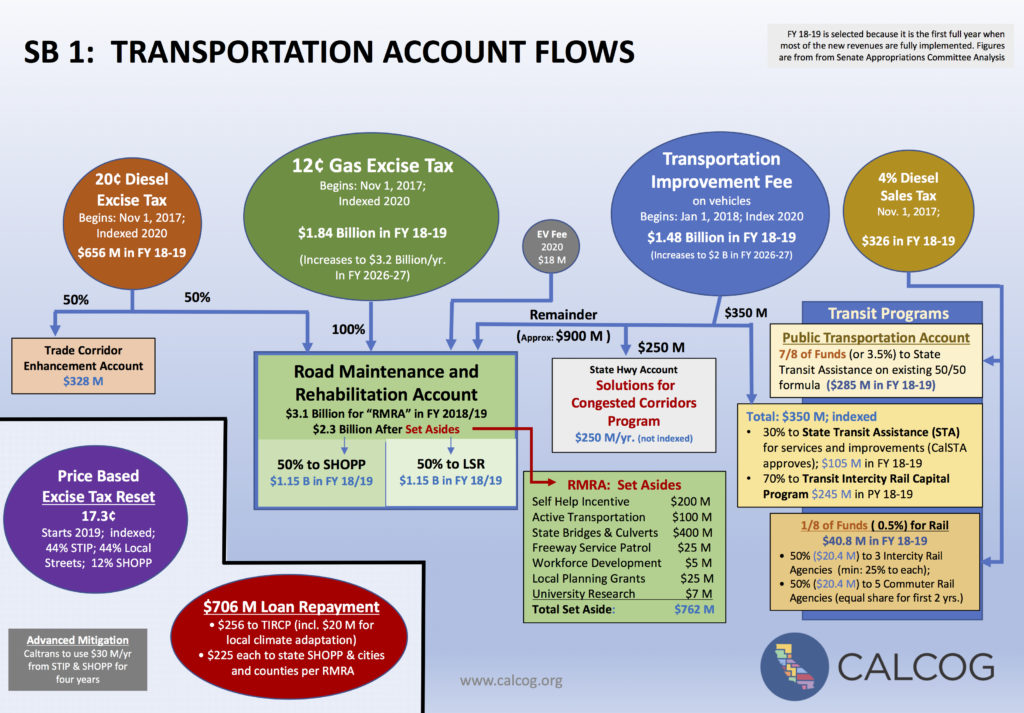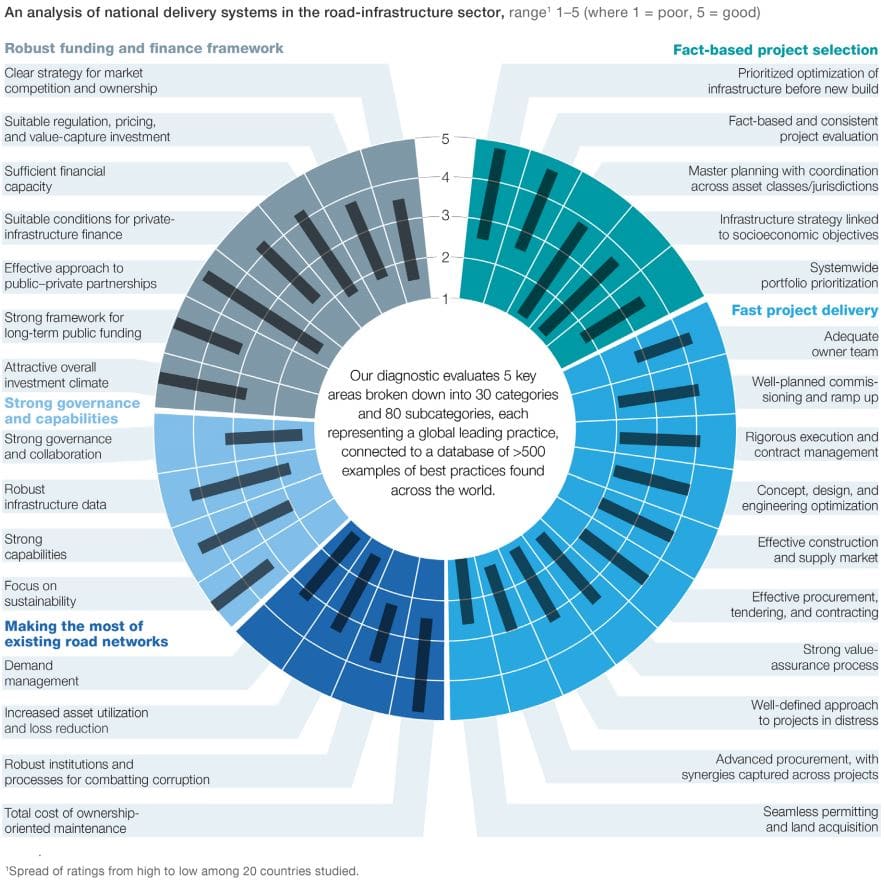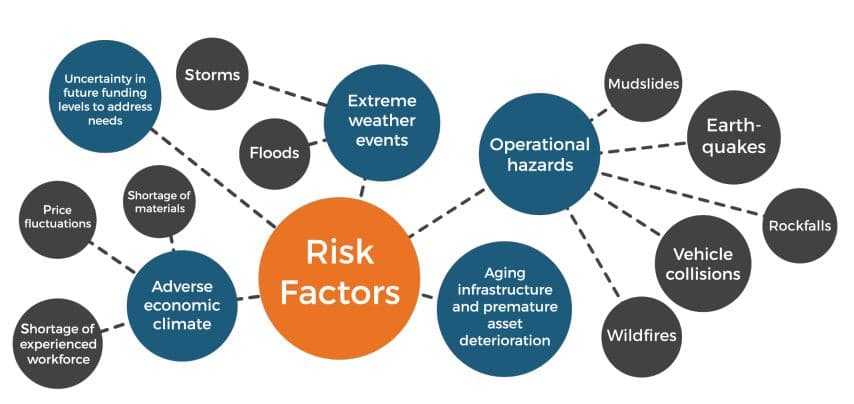Tips for Managing Complex Transportation Infrastructure Projects
It’s no secret that transportation infrastructure projects are fraught with complexity. The inability to deal with this complexity can make it difficult to deliver expected value. Let’s start by defining some of the areas that make transportation infrastructure programs complex. Then, we’ll discuss some strategies for overcoming these challenges to achieve better project and business outcomes.
What Makes Transportation Infrastructure Projects Complex?
1. Complex Funding Mechanisms
There are a myriad of options for supporting transportation infrastructure programs. Programs are funded by everything from tolls, rents, local funds, state funds, federal funds, various bonds and loan options, not to mention complex grant processes that are governed by their own statutes and regulations. Additionally, Public-Private Partnerships (PPPs) are becoming more prevalent, having doubled over the past ten years. PPPs help bring in new sources of funding, which is a good thing, but it still adds to the complexity.
Here is an example of how complex the funding flow for a transportation system can be:

2. The Prioritization and Selection of Programs
This is an area of considerable waste. Transportation infrastructure planners need to align their plans to meet public perceptions of needs – in order to satisfy customers. Customer needs are not always easy to measure. They include road safety, safety in public transport, private transport efficiency, public transport efficiency, and environmental impacts. Aligning capital priorities with strategic vision is a distinct challenge. If the strategic vision is defined properly and high value programs that align with it are funded, organizational goals are more likely to be achieved and customer needs will be satisfied. Conversely, if there is a lack of alignment between programs and strategic vision, goals are unlikely to be met, and funds will be considered wasted.
3. A Complex Ecosystem
The makeup of transportation infrastructure programs makes success a true challenge. The ecosystem of stakeholders includes local, state, and federal agencies, contractors, subcontractors, business community, community groups, environmental organizations, and the general public. Effective coordination and collaboration between stakeholders is often very difficult.
McKinsey recently developed a diagnostic for the effectiveness of road infrastructure delivery systems. The result helps illustrate the complexity of the sector:

4. The Unknown
The first three points are a significant, but very familiar challenges for practitioners in the transportation infrastructure industry. What wasn’t expected was the COVID-19 pandemic and the immediate effect on the sector. A huge downturn of tolls, rent, and fuel taxes is offset by funding made available for transportation infrastructure projects and programs from governments across the globe. Overcoming the challenges of selecting the right programs to fund is more important than ever. It reinforces the point that the transportation infrastructure industry is uniquely impacted by and susceptible to unforeseen events.

“Unexpected or unplanned events, such as adverse economic climate and external
hazards can prevent an agency from meeting its goals. Other factors such as the lack of reliable performance data or forced workforce reductions, will impact an agency’s ability to anticipate and plan for risks.” – Nevada DOT
These challenges certainly paint a dire picture of the situation. However, there is hope!
Making Sense of the Chaos
How do we start to bring order to the chaos? How do you eat an elephant? One bite at a time. Let’s break this down into some of the components:
Complex Funding Mechanisms
A core challenge to infrastructure development has been—and continues to be—the availability and suitability of funding mechanisms. While many continue to try, you cannot effectively manage the long- and short-term capital investment budgets and plans, control and manage annual spending, and avoid unplanned spending with many disconnected systems or spreadsheets. This challenge can only be mastered by an integrated system with the ability to support complex and flexible workflows that are based on type of funding with unique business rules per funding source.
Program Prioritization and Selection
In an age of fiscal uncertainty, countries, states, and cities must optimize capital allocation to improve infrastructure planning. This starts with properly prioritizing programs and ensuring that high priority programs are selected and funded. Programs that align with the stated strategic vision and not just programs that are ‘shovel-ready” require immediate funding. Without good processes for evaluating programs, it is often difficult to identify which programs best align with strategic vision. Therefore, lower value projects that only provide minor benefits might get funded. Because of this, crucial infrastructure initiatives may not receive the capital they deserve. This includes those that could reduce costs, increase productivity, or substantially benefit the public.
The ability to obtain clarity in defining any number of potential investment scenarios is the key to unlocking value. This means being able to choose different criteria to consider, such as strategic alignment, customer satisfaction improvements, or ROI. A coordinated infrastructure planning approach is especially important with the budget-constricted environments that transportation infrastructure entities are facing.
The application of a reliable and repeatable infrastructure planning framework is likely to include outputs of a life-cycle cost analysis. High performing organizations utilize a standard framework or process to help analyze projects, identify the “champions” that would best fit priorities, and deploy limited capital in the most efficient fashion possible.
Source: Deloitte – Investing in Infrastructure: Leading Practices in Planning, Funding, and Financing
The Benefits of Standardizing the Project Evaluation Process
It is critical use a standard methodology when evaluating programs. But you still need the flexibility to tailor standards to the needs of the organization. The ability to enable this process provides several benefits:
- The ability to create a standard business case which allows planners to compare “apples to apples” and make better decisions.
- Obtaining clarity in defining any number of potential investment scenarios. You can do this by choosing different criteria to consider, such as strategic alignment, cost consideration, and customer satisfaction improvements.
- Supporting multiple cost modelling options, from simple to very complex, based on project and program templates.
The key to improved project selection is to establish a rigorous, fact-based project evaluation and a transparent process for establishing what can be done and in what order. Ensuring an outcome-focused approach to prioritization will bring the greatest benefits to citizens and businesses. Enterprise Project Performance tools are great at modelling these potentially complex scenarios in a consistent and objective manner. It allows Capital Planners to focus on decision making and not be concerned with data gathering or data quality.
Complex Ecosystems
Providing a single version of the truth to all stakeholders ensures effective collaboration. This is very important in navigating the complex ecosystem of transportation infrastructure projects and programs. Transportation planning is a cooperative process. It requires involvement by all users of a system and includes multiple steps:
- Creating forecast scenarios with differing variables, such as future population and employment growth, as well as identifying major growth corridors.
- Identifying current and projected needs and problems. Then, analyzing through detailed planning studies, the various improvement strategies to address those needs.
- Developing long-range plans and short-range programs of alternative capital improvement and operational strategies for moving people and goods.
- Estimating the environmental impact of recommended future improvements to the transportation system.
- Developing a financial plan for securing enough revenues to cover the costs of implementing strategies.
Utilizing an Enterprise Project Performance solution, integrated with other key data sources, as a central hub for data and reporting can greatly ease the burden of planning for project leaders.
Global Uncertainty
Events that are out of our control can cause significant uncertainty. They can trigger the need for quickly pivoting or re-prioritizing programs. The ability to quickly model different scenarios, changing priorities, while remaining confident that it is being done within a standard process is key. Technology can enable organizations to act with agility while still remaining compliant with rules, regulations, and best practices.
In Conclusion
How do we bring order to the complex, multi-tiered transportation infrastructure environment? By breaking into its component parts and leveraging technology to help. Enterprise Project Performance software can support a standard planning and program process, provide flexibility in supporting complex funding mechanisms, act as a single source of truth, and provide the ability to quickly model new scenarios in order to rapidly pivot based on changing circumstances.
For more on how Enterprise Project Performance can benefit the transportation infrastructure industry, watch our on-demand webinar “Overcoming the Status Quo to Drive Transportation Project Success.”